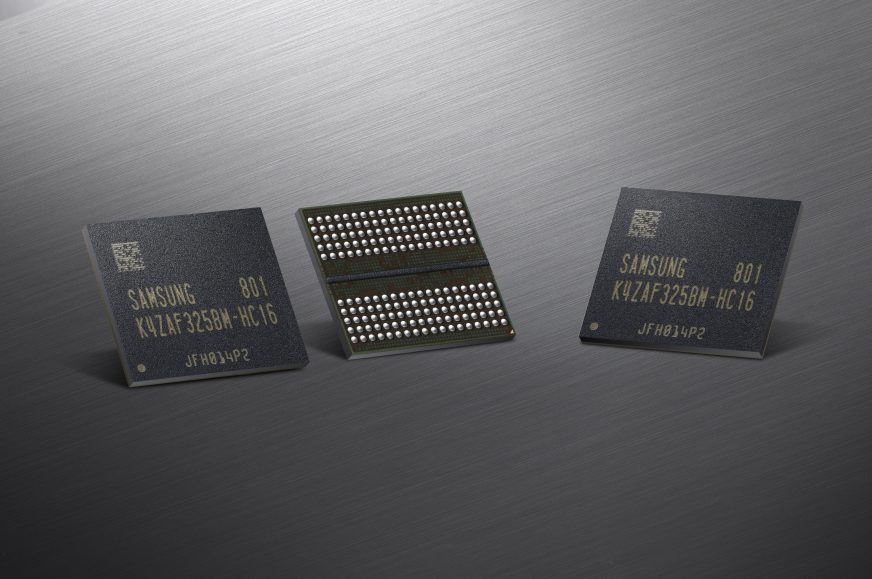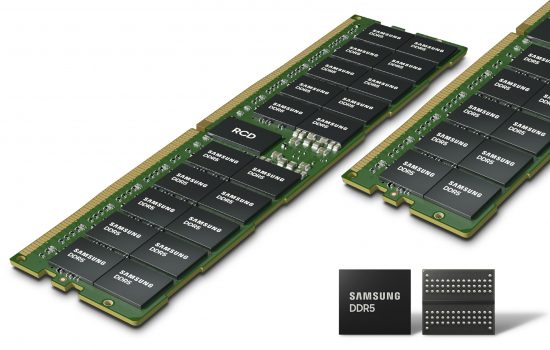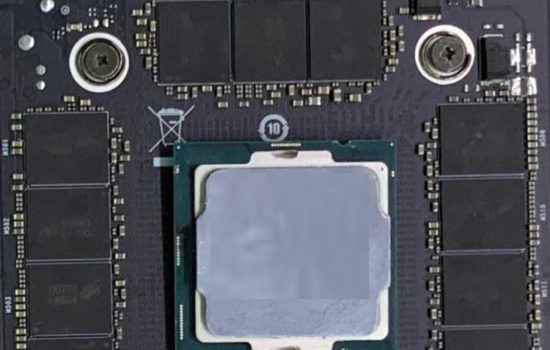GDDR6 with significantly higher clocks, or GDDR6+?
Since HBM2E is no longer used in gaming GPUs due to its price, the highest performing graphic memory is now the PAM4-based GDDR6X, developed by Micron for Nvidia and reaching transfer rates of up to 21.0 GHz. However, it could now be outperformed by the classic GDDR6. Samsung has announced 20GHz and even 24GHz samples of GDDR6 (or GDDR6+?), that could bring about a 50% bandwidth increase when compared to current GDDR6.
Samsung is one of the three main graphic memory producers (next to Micron and Hynix). Although it has been originally expected that the GDDR6 will only reach a 16.0GHz effective clock speed, Samsung has already announced 18.0GHz chips running above this level a while ago. However these are currently not in mainstream use (apparently utilised only by the liquid-cooled edition Radeon RX 6900 XT), even though we have first heard of them almost four years ago.
It seems like Samsung intends to continue along this path. The company has announced samples of GDDR6 chips, that ought to reach even higher (20.0 GHz to potentially even 24.0 GHz) frequencies and is likely to already be sampling them to its potential clients. This would mean that, compared to the original expectations, the GDDR6 technology might get a 50% boost to its bandwidth (or a 33% boost, if compared to the “pumped up” 18.0 GHz chips).
Such frequencies would enable the ordinary GDDR6 to be able to compete with GDDR6X memory modules with PAM4 coding, which aims for a 21.0 GHz frequency in its first generation. However that GDDR6X speed will only be practically achieved a year after introduction with GeForce RTX 3090 Ti, the first wave of GeForce graphic cards with this memory has halted a bit lower.
Is it already the GDDR6+?
It is not very clear how Samsung has managed to drive the frequency to such unusual heights. One possibility that it will involve factory overclocking, but you might remember that ComputerBase has stated recently that Samsung is developing an incremental enhanced version of the GDDR6 technology called “GDDR6+”. The goal for that technology has been claimed to also be an effective frequency of 24.0 GHz.
Therefore it is possible that the samples in question might actually already belong to this GDDR6+, meaning that some accommodations and modifications would be responsible for the claimed clock rates. Think something similar to the changes conducted to the LPDDR4 and LPDDR5 memory modules that resulted in the LPDDR4X and the LPDDR5X derivatives, which are also achieving higher performance/frequencies. The reason why the new memory modules are still listed as GDDR6, might be the fact that the GDDR6+ standard has not been formally announced yet.
More: Future of memory tech: Samsung on DDR6, GDDR7 and GDDR6+
These samples of the new GDDR6 (GDDR6+?) memory modules are already featured in Samsung’s catalogue. The 20.0 GHz model is listed as “K4ZAF325BC-SC20” and the chips with an effective frequency of 24.0 GHz as “K4ZAF325BC-SC24”. As you can see below, there’s a note that these products are just in the sample phase and have not entered mass production yet. The featured chips have a capacity of 16 Gb, or 2 GB each.
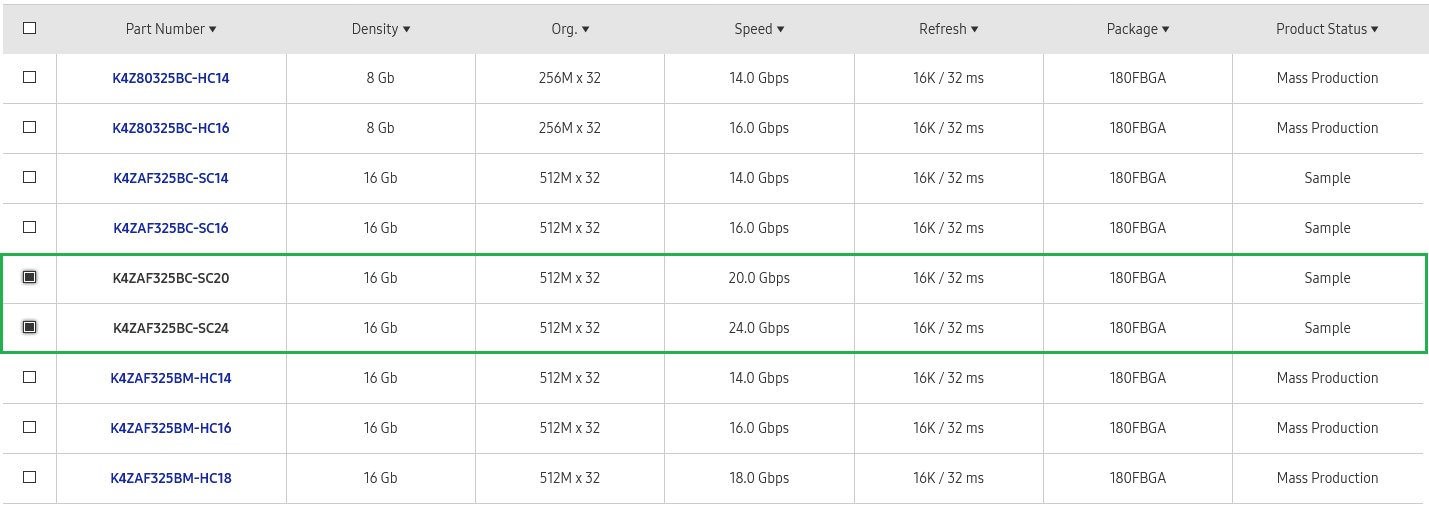
GPU vendors could use these chips to produce graphic cards with a 16 GB capacity on a 256 bit bus that would have a bandwidth of 640 GB/s (with the 20.0GHz version) or 768 GB/s (with the 24.0 GHz version). Graphic cards with a 384 bit bus, like high end GeForce SKUs, could reach up to 960 GB/s, or 1152 GB/s respectively, with a capacity of 24 GB. When speaking about mainstream graphic cards, bandwidth of 320–384 GB/s would become available to GPUs with 128bit memory bus) and or 480–576 GB/s for GPUs using 192bit-wide bus).
However it is not clear yet that such frequencies will actually be featured in graphic cards. As already mentioned the 18.0 GHz chips have so far seen only limited use and Nvidia, for example, does not even fully utilise the standard 16.0 GHz max frequency of current GDDR6, most of its graphic cards top out at 14.0 GHz. For such high frequencies to be used, not only to the chips have to support them, the memory controllers in the GPU have to support such clock speeds as well. It is therefore to be expected that GPU producers will have to develop their products with regards to such clock rates from the start. Besides, a 50% increase in clock rates might lead to increased power consumption, too.
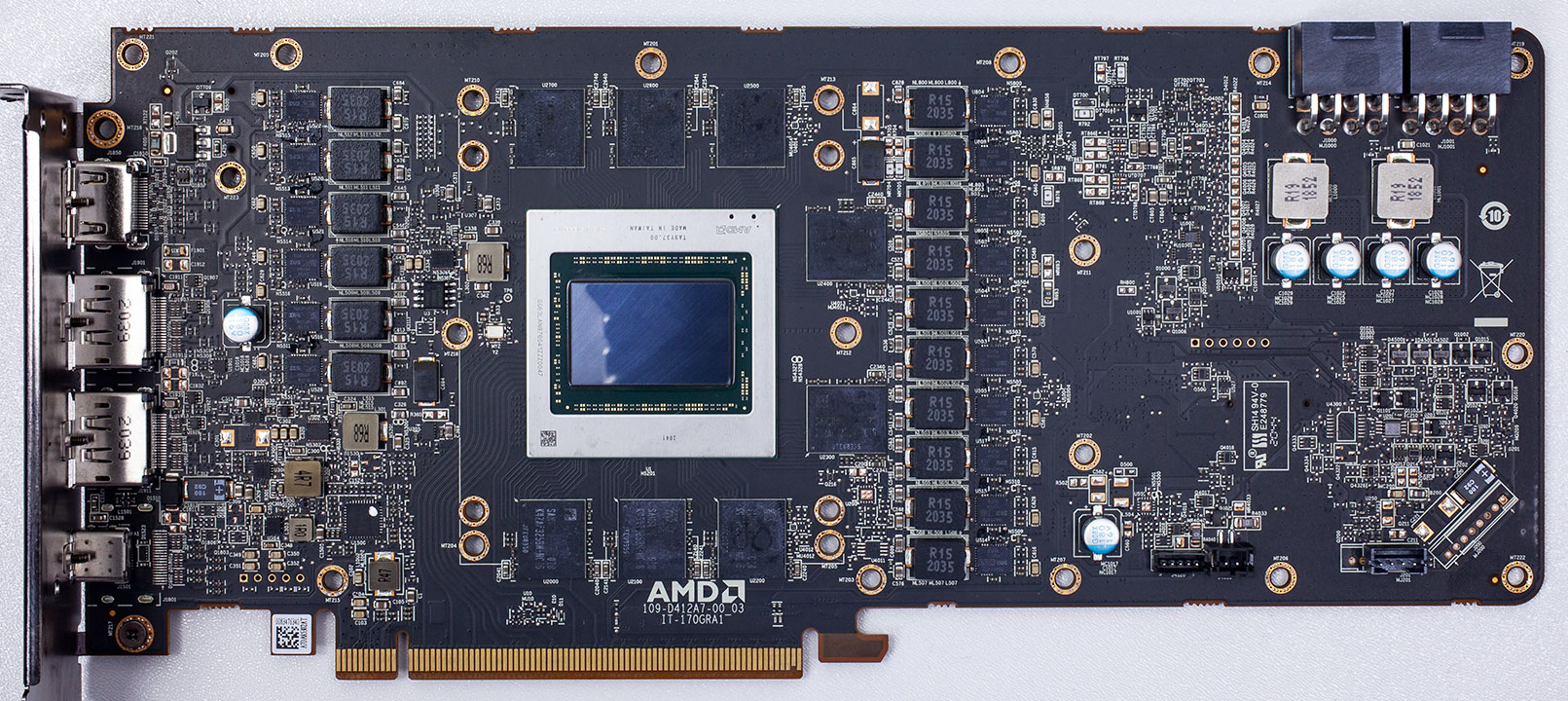
A potential in the long run
Even if Nvidia and AMD are actually considering using this memory, it is still not to be expected to see them in the next graphic card generation, which is expected to arrive at the end of 2022. It is more likely for them to occur in a later generation (2023, or 2024). Samsung itself might need some time to get them in volume production and to sufficient yield. The whole matter further depends on whether the announced memory will merely be a factory overclocked version of the ordinary GDDR6, or whether it will be the modified “GDDR6+” standard. If it is a new standard, then such frequencies will be business as usual, making them easier to productise. If the former is the case, then this technology might be an interesting potential for increasing of the performance of future graphic cards.
Source: VideoCardz, Samsung
English translation and edit by Karol Démuth, original text by Jan Olšan, editor for Cnews.cz
⠀





